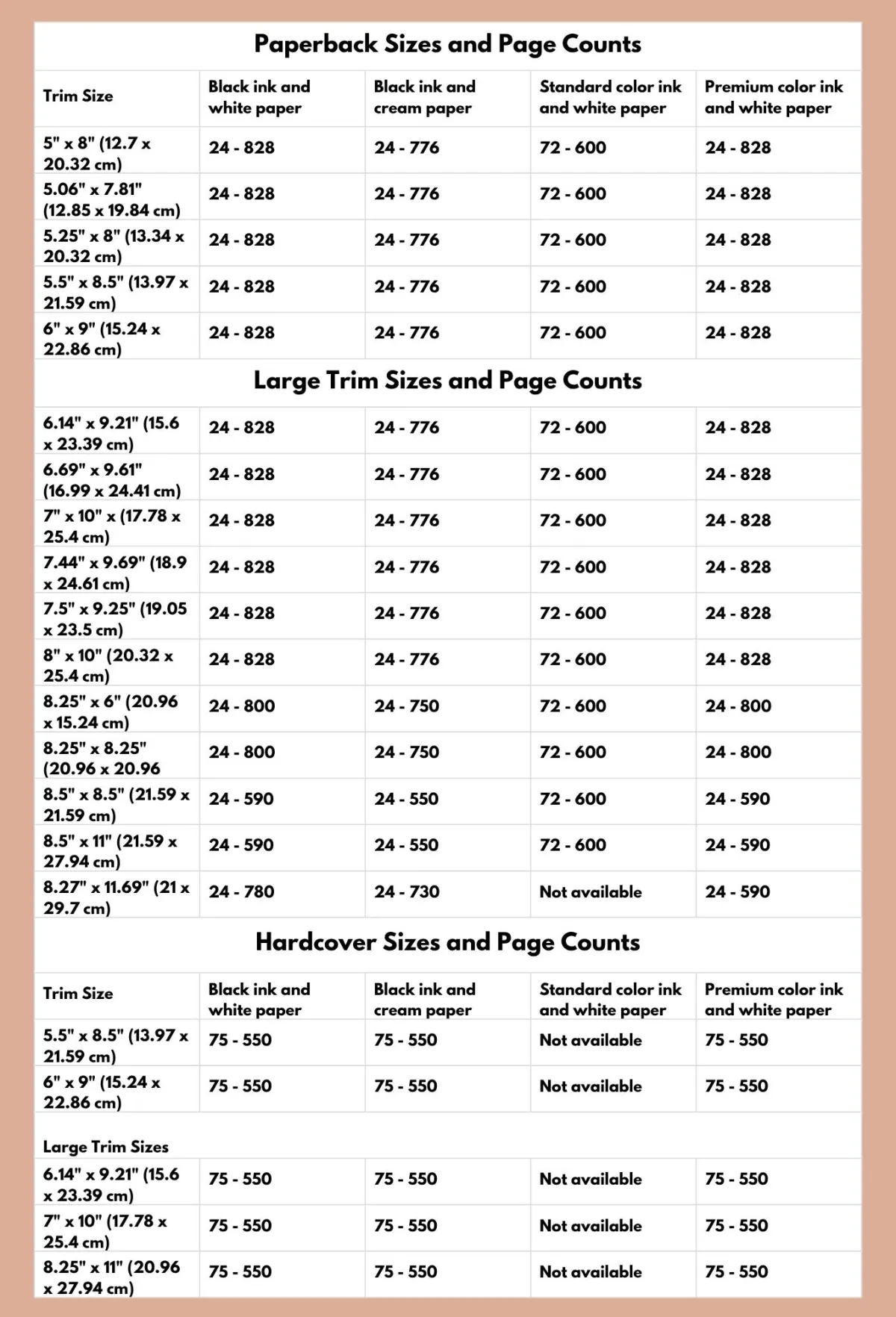Self Publishing Resources

Before you publish, it’s essential to ensure your manuscript is properly formatted and ready for production. From selecting the right trim size to preparing your file for professional formatting, every detail plays a role in how your book will look and feel in a reader’s hands.
Choosing the correct trim size affects your page count, printing costs, and overall aesthetic, while proper manuscript formatting ensures a smooth transition to print and digital platforms.
To help you navigate these critical steps, we’ve compiled a collection of resources designed to simplify the process and set you up for a successful self-publishing experience.
Whether you're finalizing your manuscript, selecting a trim size, or refining the layout, these tools will help you create a polished, professional book that meets industry standards.
Manuscript Preparation Guidelines
To ensure your self-published book looks polished and professional, follow these key standards before moving into the publishing process.
Consider font size, line spacing, and margins to ensure readability, especially on smaller screens. Fonts that are too small or too large can make reading uncomfortable and detract from the experience.
Elaborate fonts work well for headers and chapter titles but are not ideal for body text.
Times New Roman
A classic serif font with a professional, traditional look
Garamond
Elegant and sophisticated, this serif font suits fiction well but can be harder to read in smaller sizes.
Arial
Clean and modern, this sans-serif font works well for digital formats and dialogue-heavy text but might seem too plain.
Verdana
Easy to read, even in smaller sizes, this sans-serif font is great for digital and text-heavy books.
Georgia
A stylish serif font ideal for historical fiction or memoirs.
Calibri
A modern sans-serif font designed for digital readability.
Serif
Decorative and classy, this font is great for titles and headings but not ideal for lengthy text blocks.
Other Suggestions and Recommendations
Use Microsoft Word as Your Base Tool. It remains the most accessible and widely compatible tool for drafting and formatting manuscripts—especially for text-based books. It’s familiar, easy to navigate, and generally accepted by platforms like KDP and IngramSpark (NSP uses KDP exclusively at this time).
Avoid Google Docs for Final Formatting (Unless You're Confident). While you can draft in Google Docs, it’s not ideal for final formatting—especially if you're unfamiliar with publishing layout standards. Things like page breaks, margins, and section breaks can be tricky and may not translate cleanly when exported.
Formatting Basics
Use bold and italic text sparingly but intentionally
Only one space after each sentence (not two)
Insert a single return before and after each paragraph or subhead
Use page breaks (for eBooks) or section breaks (for print books) between chapters
For journaling pages, five underscores (_____) is plenty—no need to span the page
Writing & Editing Tools
Programs like Grammarly, ProWritingAid, and Atticus can be great writing companions. While not required, they can help clean up grammar, style, and readability. Just know they come with a cost, and they don’t replace a professional editor.
A Few Reminders
Save As You Go. Always keep multiple backups—Google Drive, Dropbox, or even emailing yourself a copy weekly. Don’t let a tech glitch or accidental deletion ruin your progress.
Keep It Simple for Now. Don’t stress about making it look like a finished book at the draft stage. Clean structure and clear formatting matter more than fancy fonts or decorative elements.
It Doesn’t Have to Be Perfect. Formatting isn’t forever—and it can always be cleaned up before publishing. Don’t let it stall your writing progress. Ask questions when you need to, but don’t lose sleep over getting it “just right” on the first pass.
Standard Book Printing Sizes for KDP

Our editing team will handle the layout of your manuscript to ensure it looks consistent and professional in the printed book, so there's no need for you to format it precisely as it should appear in the final publication.
Want to work with us?
FOLLOW US
Copyright 2025. Changing the Narrative. All Rights Reserved.

Facebook
Instagram
Mail